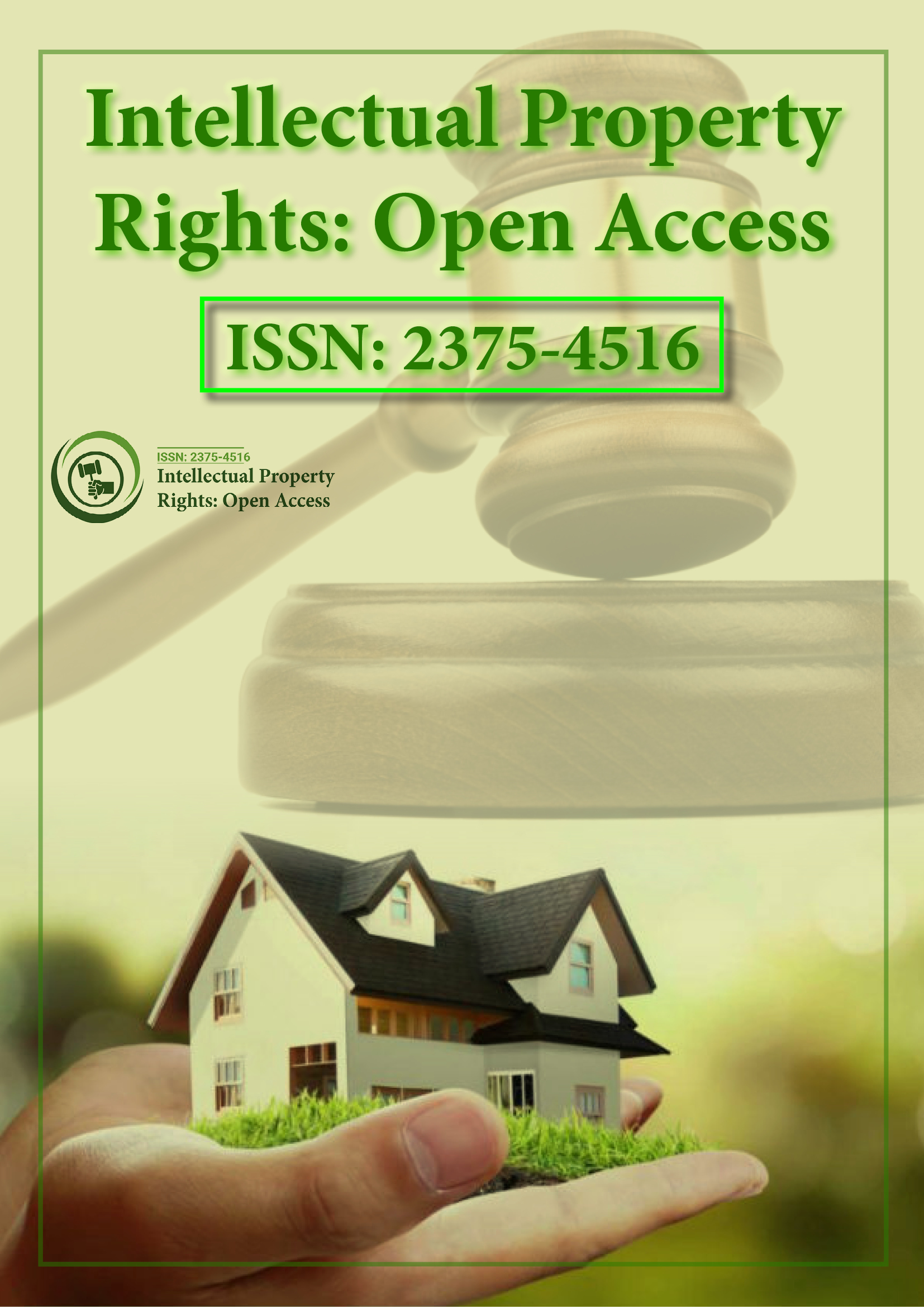Indexed In
- Open J Gate
- RefSeek
- Hamdard University
- EBSCO A-Z
- OCLC- WorldCat
- SWB online catalog
- Publons
Useful Links
Share This Page
Journal Flyer

Open Access Journals
- Agri and Aquaculture
- Biochemistry
- Bioinformatics & Systems Biology
- Business & Management
- Chemistry
- Clinical Sciences
- Engineering
- Food & Nutrition
- General Science
- Genetics & Molecular Biology
- Immunology & Microbiology
- Medical Sciences
- Neuroscience & Psychology
- Nursing & Health Care
- Pharmaceutical Sciences
Opinion Article - (2022) Volume 10, Issue 1
An Overview on Property Rights
Robin Grier*Received: 04-Jan-2022, Manuscript No. IPR-2022-196; Editor assigned: 06-Jan-2022, Pre QC No. IPR-2022-196; Reviewed: 20-Jan-2022, QC No. IPR-2022-196; Revised: 24-Jan-2022, Manuscript No. IPR-2022-196; Published: 31-Jan-2022, DOI: 10.35248/2375-4516.22.10.196
Description
Property rights are constructed in economic science for determining how a resource or economic good is used and owned. Resources will be owned by (and therefore be the property of) people, associations, collectives, or governments. Property rights will be viewed as an attribute of an economic good. This attribute has three broad elements and is usually mentioned as a bundle of rights in the US. The right to use the good, the right to earn income from the good, and also the right to transfer the good to others, alter it, abandon it, or destroy it. The fields of economic science and law don’t have a general agreement on conceptions of property rights. Various property types are used in law but the terminology may be seen in economic reports. Generally, in economic science, property types are merely described as private or public/common about private goods (excludable and rivalrous goods, like a phone) and public goods (non-excludable and non-rivalrous goods, like air) respectively.
Property rights are classified with excludability and rivalry. Excludability describes the characteristic relating to whether a good is withheld from certain consumers. In terms of a similar good, rivalry describes its accessibility to competing consumers. The combination of excludability and rivalry as parameters is reflected through various forms of property rights. Open-access property is closely-held by no one. Open-access property isn’t managed by anyone, and access to that isn’t controlled. This can be additionally referred to as a common property resource, impure public good, or a common pool resource. Samples of this can be air, water, sights, and sounds. If non-rivalrous, it would be a public good (cannot be rivalrous, regardless of how much it’s used, as an example, the ocean). Open-access property could exist because ownership has never been established, granted, by-laws inside a specific country, or because no effective controls are in place, or feasible.
Public property (also called state property) is excludable and may be rivalrous or non-rivalrous. This kind of property is publically owned, but its access and use are managed and controlled by a government agency or organization granted such authority. As an example, a government pavement is non-excludable as anyone may use it but rivalrous as, the more people use it, the more likely it’ll be too crowded for another to join. Public property is sometimes used interchangeably with the general public good, usually impure public goods. They may also be a club good, which is excludable and nonrivalrous. An example would be paying to go to an uncongested public bathroom, as the price excludes those who cannot afford it however there are ample utilities for more people to use making it non-rivalrous.
Private property is both excludable and rivalrous. Private property access, use, exclusion, and management are controlled by the private owner or a group of legal owners. This can be sometimes used interchangeably with private good. An example would be a mobile phone as only one person could use it, making it rivalrous, and it’s to be purchased, which makes it excludable.
Common property or collective property is excludable and rivalrous. Not to be confused with the common property regarding economic science, this can be about the law. It is a property that is owned by a bunch of people wherever access, use, and exclusion are controlled by the joint owners. Not like private property, the common property has multiple owners which permit a greater ability to manage conflicts through shared benefits and enforcement. This would still be associated with private goods. An example of common property would be any private good that is jointly owned.
Citation: Grier R (2022) An Overview on Property Rights. Intel Prop Rights. 10:196.
Copyright: © 2022 Grier R. This is an open-access article distributed under the terms of the Creative Commons Attribution License, which permits unrestricted use, distribution, and reproduction in any medium, provided the original author and source are credited.
